

2018 Crawford Fund Annual Conference Keynote Listeners Report
August 30, 2018
We are proud to deliver, for your reading pleasure, our Keynote Listeners report from this month’s Crawford Fund Annual Conference 2018, a convenient and succinct summary capturing everything you may have missed from our flagship event.
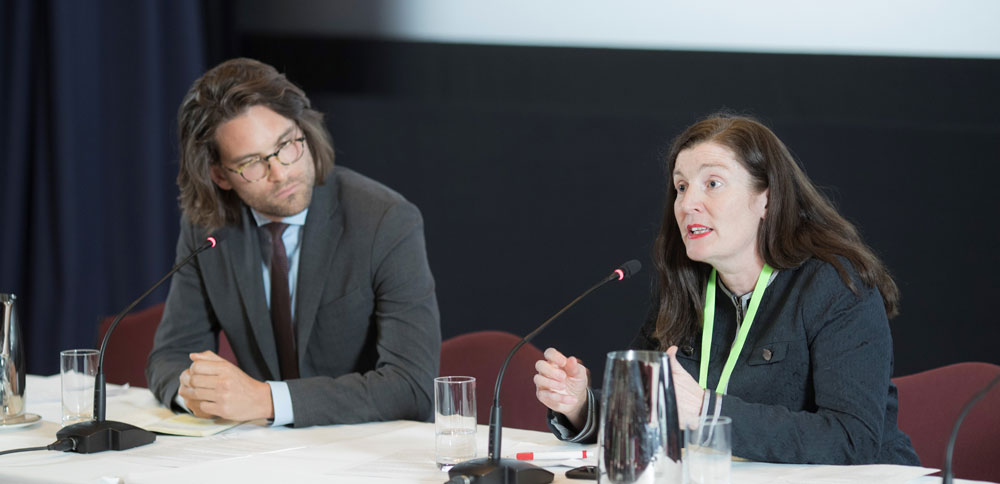
Our Keynote Listeners, play an integral role in summarising and communicating key messages from our conference. This initiative is delivered, as part of our RAID program (Researchers in Agriculture for International Development) – the Australia-wide network that brings together early to mid-career researchers with an interest in agriculture and international development.
RAID is also an integral part of our conference scholar program, assisting with our scholar activities and mentoring some of the scholars. Most of our conference scholars go on to be members of RAID.
Our RAID keynote listeners this year, Dr Madaline Healey and Ms Rebecca Cotton, are former conference scholars who have maintained their interest in agricultural research for development and are both active international researchers.
This is just the first part of our official conference reporting, proceedings from the event will soon be available, and a report from our conference synthesiser, Professor Robyn Alders, will feature in our next newsletter.
Introduction
When addressing the question of how agriculture can best meet global food demands, it’s no longer adequate to frame the discussion in terms of quantity. What is required is a framework that encompasses the complexities of providing adequate and appropriate nutrition to an increasing global population, whilst ensuring environmental sustainability.
This year’s conference presented a diversity of research and thinking on the critical issue of reshaping agriculture for better nutrition framed around the Sustainability Development Goals (SDGs). Ms Frances Adamson presented the Sir John Crawford Memorial Address, providing an overview of the malnourishment crisis facing the world, including the global disparities in nutritional provision and associated health implications, leading us to ask, ‘how can agriculture help solve this nutrition problem?’ In decades past, agricultural scientists have produced yield increases, however now there is an increasing focus on producing better quality outcomes, with less input and fewer environmental costs.
Sir John Crawford said, ‘I wonder whether are we yet pulling our own weight, and if we truly realise the magnitude of the road ahead’. As echoed by the conference speakers, perhaps the time has come to question the level of our ambition, and to aim higher because the need is both great and growing.
Welcome
In his opening address, the Honorable Mr John Anderson AO highlighted the global dilemma of malnutrition, noting that for the first time in human history, malnutrition is no longer simply concerned with a lack of resources resulting in hunger and starvation, it now encompasses the contrasting issue of the burgeoning obesity crisis. This double burden, of over and under supply, was the central theme of all presenters, highlighting the many challenges we face to overcome this complex nexus. Hunger accounts for 1.5 times more deaths than disease and national disasters combined worldwide, while global obesity affects over 2 billion people.
Feeding a growing global population with healthy food from a healthy planet
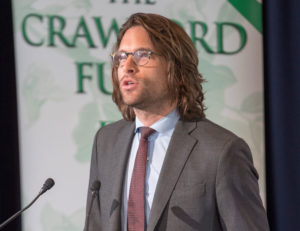
In the morning keynote Dr Alessandro Demaio, focused on how food industries require a paradigm shift away from quantitative production goals, and towards qualitative outcomes. Dr Demaio stressed the importance of acknowledging those global successes that have already been achieved as part of the green revolution. However, he reminded us that despite the successes, the industrialisation of food production has failed human health, stating that ‘food is the single greatest risk to human health’.
One way to view this knot of conflicting needs is to separate them into two overlapping biophysical matrices with one focused on planetary needs and the second on health needs. Within the overlap lie our food systems: and this is where today’s investments need to be directed. Currently, the situation is that diets can be sustainable but not healthy or healthy but not sustainable. Instead, we need to achieve a win-win diet. Sustainable for both humanity and the planet.
Challenges and impacts of poor nutrition
Dr Jessica Fanzo, discussed one of the major effects of poor nutrition, emphasized throughout the conference, which is the stunted growth of women, adolescents and children. Dr Fanzo addressed the causal pathway of malnutrition and its associated costs and consequences to health of the individual and to the broader society, including how the transformation of diets and food systems is being reflected in the changing nutritional status of people worldwide. The primarily subsistence systems are generally deficient in micronutrients, and are subject to frequent catastrophe and unreliable nutrition. The mixed food systems (where the majority 5 billion of the population fall), is a service–based economy with a higher proportion of processed, packaged food, and additives such as vegetable oils, salt and sugar. The modern, Western diet, which has a high meat-based content, is also high in variety and in people eating away from the home. This has resulted in high rates of obesity and non-communicable diseases (NCD’s) (spell out first). While it would seem logical that wealth should mitigate malnutrition, it has not been shown to be the case. Both high wealth and low wealth communities are consuming far too many poor nutrient foods (processed foods) and not enough nutrient rich foods (nuts, grain and vegetables). The fact being no one is eating enough vegetables – irrespective of income.
In closing, Dr Fanzo echoed the question raised by Sir John Crawford: “Who owns the food systems? The government? Someone needs to take ownership and responsibility to bring about change. Who has the motivation to act? What are you going to do?!”
How does agriculture respond to the nutrition challenge?
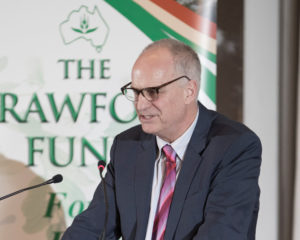
Professor Andrew Campbell led the discussion on how to respond to the nutrition challenge by highlighting the complexity of the situation with the comment, ‘If this were straight forward – it would be sorted by now’, arguing that humans are a geological force and that agriculture is the most powerful tool we have. It employs more people than any other industry, describing it as both yin and the yang – with the power to do good and bad.
He echoed Dr Fanzo that the world is out of balance. When we look at what are we producing, does that reflect what we know we should be eating? No. We know we should eat more fruits and vegetables and research and research investments are needed to counter balance this. Agricultural science can respond to increased challenges effectively and suppliers can shape the demand as what we eat can shape what is produced. We are now moving towards the fourth industrial revolution of technological innovation. We need to investigate how technology can accelerate and improve the outcomes of our food systems. All end users need to be invested in the process of discovery to develop effective solutions; this is critical for food security, for global nutritional demand and planetary well-being. However, meeting the SDG’s must be a central tenet of any solution.
Following on from Professor Campbell, Dr Anna Okello discussed the direct and indirect impacts of livestock on human nutrition as well as the broader outcomes of livestock in a cultural context. Animal-source foods are a way to meet the nutritional requirements of a growing population, however they are more than just a food source. They act as an income generator and can impact the social status, livelihoods and wellbeing of smallholders, having played a critical role in human development through millennia – physical, socially and immunologically. Dr Okello pressed upon us to ask what happens when we don’t acknowledge the role of livestock in the cultural context. For example, you cannot compare a high input mechanized farm and a smallholder system with low inputs. Looking beyond the social and economic disparities, can and should these two systems be thought of in the same context? Dr Okello further highlighted that all systems need to be well managed, well researched and well defined in the cultural context. It is up to us to ensure that our impact statements and research questions are appropriate to ensure our results reflect real needs.
Continuing the theme of quantity vs quality, Joanna Kane-Potaka, called for us to develop food systems and value chains that encompass the concept of smart food: ‘good for you, good for the planet and good for the farmer’. To date, the food system is focused on the quantity of calorie rich staples-wheat, rice and maize. Ms Kane-Potaka put forward a need for diversity on farms and higher diversity on our plates, asking us to shift this focus from these staples to more nutrient dense crops such as millet and sorghum. These grains have three times more calcium than milk, three times more iron levels than meat; a low glycemic; low-risk to pest and disease and require a lower fertiliser and water input. The question is ‘how can we bring crops such as millet and sorghum into the mainstream, to become an industrial crop and how do we ensure that farmers can benefit from this?’
Continuing the narrative of diversifying our farms and diets, Dr Marco Wopereis, discussed the benefits of tapping the nutritional power of vegetables by investigating traditional varieties versus the big commercial varieties. In a similar theme to Ms Kane-Potaka, these traditional varieties are robust and rich in nutrients and require less pesticide inputs. These varieties are predominantly consumed by rural communities as they produce more of their own foods, but Dr Wopereis asked “how can we mobilise the power of indigenous vegetables for rural consumers?”
Discussing the contrast between growing vegetables for consumption and growing to sell, Dr Wopereis highlighted that the tradeoff was generating an income and the ability to purchase other foods, at the cost of some degree of food autonomy. Moving forward, he called for increased links between formal and semi-formal markets such as cooperatives; the need for harmonizing production and harvesting, and to improve post-harvest handling. As stated by Professor Glenn Denning in the following session, what is the point of producing it, if we lose it at the farm gate, or worse, waste it?
Delivering results – policies and practice for change
In his overview presentation, Professor Glenn Denning asked if we can achieve the SDG targets by 2030? He suggested that by 2050 we need to move beyond the concepts of the green revolution – high quantity and calorie rich food – to more sustainable intensification ‘the green revolution 3.0’. To do so we need to invest in modern science to develop systems that are more climate smart and shock resilient. There is also a need to improve input efficiency, which may in fact see us take back some agricultural land whilst still producing at the same rate. Critically we need to move beyond cereals and invest in legumes, vegetables and other nutrient dense foods. As agriculturalists, we must stop thinking of nutrition as a social welfare program, but as an economic development plan in the context of farming and food production.
The case study co-delivered by Tania Paul and Philmah Seta Waken confirmed Dr Fanzo’s earlier statement that no one is eating enough vegetables irrespective of income. The case study highlighted one way forward in finding solutions to these issues in Papua New Guinea (PNG), where consumption of traditional micronutrient rich vegetables is being replaced with nutrient deficient, store bought foods. The statistics presented indicated that PNG is now suffering from the double burden of malnutrition; 76% of child mortality is due to under nourishment, concurrently 14% of children are overweight. One recommendation for the way forward is through behavioral change. To do so we need to understand the market, understand the consumers and look at the preference and consumption of these vegetables. This understanding can be used to increase the traditional knowledge around the use of such products amongst communities, schools and maternal clinics, focusing on how to prepare, cook and use these traditional vegetables to increase nutrition. Annie Major echoed these solutions in her case study on Timor-Leste, where some key nutrition indicators are low and appear to be getting worse. Her case highlights the sentiments in finding solutions through social and behavioral change, challenging us to take off our economic and gender lenses and ask what has worked and what has not.
There needs to be a shift from feeding the 9 billion to nutrition for the 9 billion, a statement from Dr Jessica Bogard. The fisheries sector has seen an increase in aquaculture consumption, this has led to the question ‘has increased availability of farmed fish offset a decrease in nutrient-rich small fish from capture fisheries in terms of nutrition?’ Dr Bogard indicated that yes, there has been some unintended consequences of focusing on quantity rather than quality and both capture and aquaculture must embrace a nutrition sensitive approach. Dr Shamia Chowdury pressed that we can go further in developing nutrition sensitive solutions by strengthening family and community engagement via an integrated approach. Incorporating the use of both on farm vegetables and pond dykes whilst looking at behavioral change, to increase dietary diversity.
Hidden hunger is affecting 1/3 of the global population, and the statistics around malnutrition, obesity and nutrient deficiencies were highlighted throughout the course of the conference. Associate Professor Alex Johnson continued this narrative around quantity verse quality reiterating that cereals are a poor source of micronutrients, particularly iron. Biotechnology now offers new possibilities to reach biofortification targets in staple grains that cannot be reached via traditional breeding. Associate Professor Johnson’s work highlighted the need for connecting the science of agriculture with nutrition and health to amplify the progress in developing healthy and sustainable food systems.
Achieving sustainable impact – win win solution
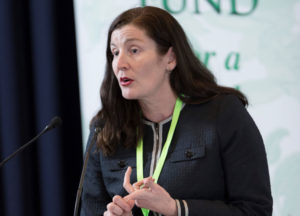
The use of indigenous grains and vegetables was put forward numerous times throughout the conference, as a way of tackling global nutrient deficiencies. Rebecca Boustead presented a case for using such ingredients to address the issue of global nutrition within their products at Kellogg’s. However, it is not as simple as just developing more nutritional dense products. The key, Rebecca stated, is to create consumer demand for healthy products. This will only occur through better governance, policy and education from the government on what to eat and how much. In her keynote address she indicated that there ‘is not enough promotion to drive these types of food’. Ms Boustead echoed Dr Fanzo’s words in asking how we can change global diets to be smarter, more nutritious and environmentally friendly. A universal conclusion from conference speakers, is that the key to achieving this lies in multi-disciplinary collaborations between sectors driven by good governance that promotes the benefits of nutritious eating.
Final thoughts
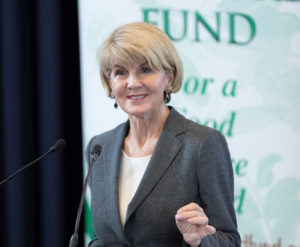
On average one Australian farmer feeds 600 people, 150 here in Australia and 450 overseas, which is a testament to our ability to help mitigate the food security shortage. The Honourable Julie Bishop in her Ministerial Address furthered this statement adding that our Australian farming experience enables us to offer the world targeted agricultural research and partnerships to improve prosperity and market access.
Professor Campbell stated that agriculture is the most effective way to lift people out of poverty and the key to meeting the SDG’s is to shape food systems that drive a transformational change. These points were again highlighted by all speakers throughout the conference. In the final synthesis, Professor Robyn Alders reminded us that there would be no civilisation without farmers and our achievements in farming and agricultural research reflect this history. During the green revolution we wanted freedom from hunger and now we need to move toward quality not quantity. We need a convergence of ideas and a systems approach to tackle the global issue of agriculture and food. In a final thought, Dr Demaio asked ‘can food systems fix this?’ The answer is yes. But this will require research that is multidisciplinary, multi-sectoral and considers contextualised solutions to develop a sustainable and healthy food system for the future.




